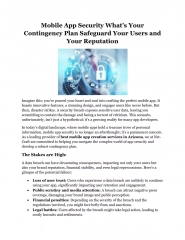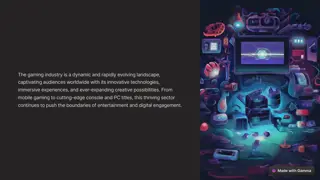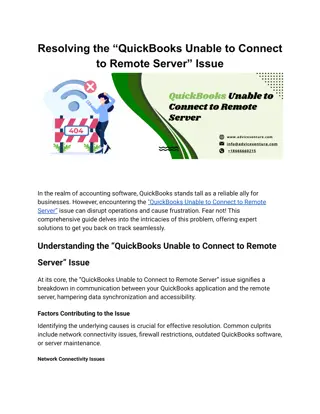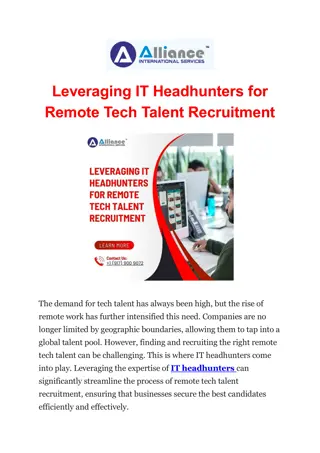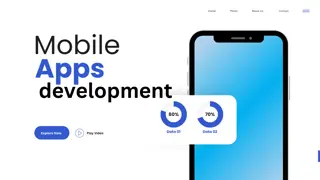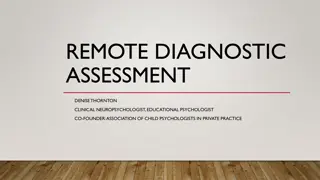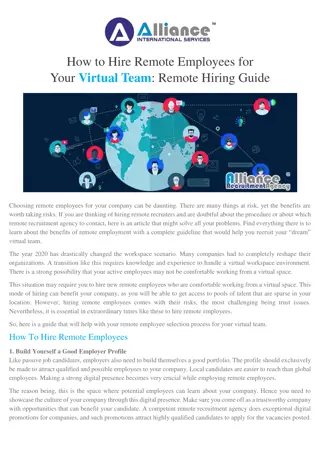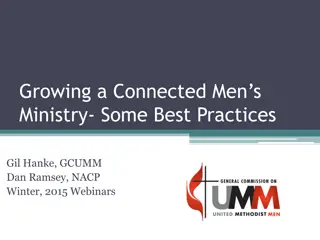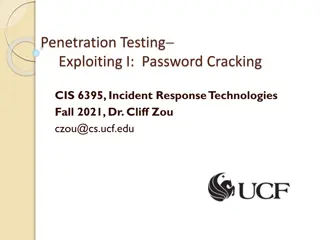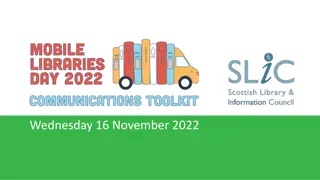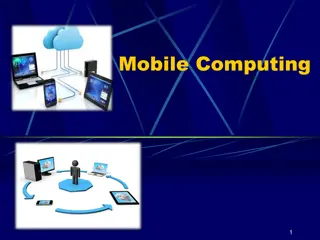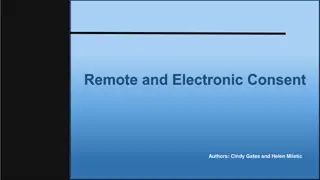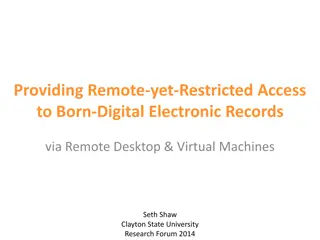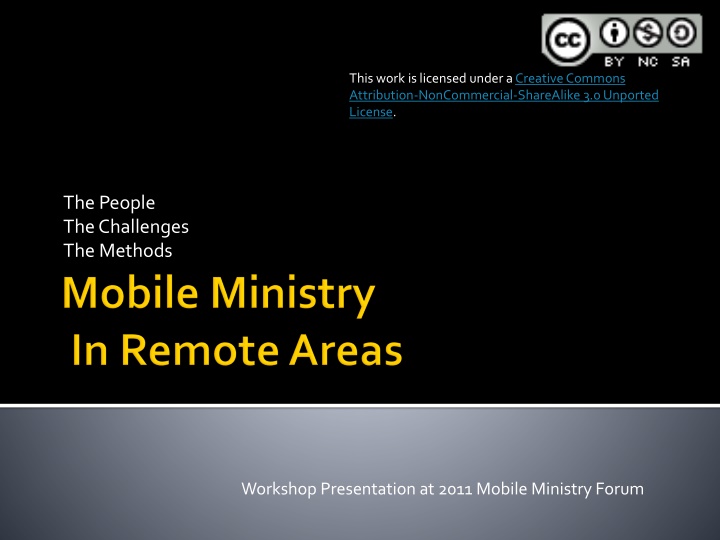
Mobile Ministry Challenges and Opportunities
Explore the unique demographics and cultural aspects of individuals involved in mobile ministry, focusing on their devices, connectivity, and cross-cultural interactions. Learn about the prevalent models and communication methods in this context.
Download Presentation

Please find below an Image/Link to download the presentation.
The content on the website is provided AS IS for your information and personal use only. It may not be sold, licensed, or shared on other websites without obtaining consent from the author. If you encounter any issues during the download, it is possible that the publisher has removed the file from their server.
You are allowed to download the files provided on this website for personal or commercial use, subject to the condition that they are used lawfully. All files are the property of their respective owners.
The content on the website is provided AS IS for your information and personal use only. It may not be sold, licensed, or shared on other websites without obtaining consent from the author.
E N D
Presentation Transcript
This work is licensed under aCreative Commons Attribution-NonCommercial-ShareAlike 3.0 Unported License. The People The Challenges The Methods Workshop Presentation at 2011 Mobile Ministry Forum
Mainly Under 30 Often Single Annual Income of $1000 to $5000 Highly Aspirational Knowledge Is Scarce Knowledge Must Work To Improve Life Spiritual Universe vs. Cognitive Universe Relational and Community Oriented
The only electronic device they own Their connection with the wider world Their alternative village of friends Their means of economic opportunity May be tied in to social status / identity Can (in some cases) be almost a sacramental means of grace as it brings the good things from the outside world (but is not an idol)
Linking via workers who know two or more cultures Paul: Jewish, Greek and Roman; Silas: Jewish and Dalmatian; Timothy: Greek and Jewish; Barnabas: Jewish & Cypriot, John-Mark: Jewish Cypriot etc. Linking Bi-Cultural Workers: John to Jose Keegan to a pastor in Venezuela to a mission station in an Amazon tribe. No one has to learn a new language, or culture that they do not know already If we start with workers in English plus (one or two of) the 10 or so major languages on the Internet (accounting for 82% of Internet users) we can "chain out" to reach the world. Electronic media in social networks "creates" and gives us access to, many bicultural and multicultural individuals.
Models: Nokia dominant in Asia / Africa Samsung, LG, also very strong Blackberry in Middle East ZTE in China About 5%-25% 3G in the developing world Opera browser, Google search Recharging / Electricity Being Culturally Appropriate Being Linguistically Appropriate Financial Constraints Security Constraints Learning Mode: Text, Audio, Video, Group . Privacy / Right To Share In That Culture
70%-90% feature phones with some web capability and increasing wireless capability, 10%-30% smartphones SMS is King . Billions and billions of texts sent.. Brief phone calls outward (inbound calls are free in most nations) due to financial constraints Video via Bluetooth (but not downloaded from the Internet as way too slow/ expensive) Listening to music, MP3 files, audio on SD cards Wireless (e.g. at free hotspots) when enabled on the phone
Textually.Org (SMS in the developing world) SMS Gateways Frontline SMS Mobile Advance s Links on SMS SMS can be used for everything from sending a bible verse a day to micropayment systems to asking questions of learners in distance education programs to encouraging mentoring leaders.
Bluetooth Bluetooth uses the 2.4 GHZ spectrum The technology is useful when transferring information between two or more devices that are near each other in low-bandwidth situations. Just starting to take off in Asia Common in Middle East & Europe Has serious security & interference issues Proximity Marketing: have people w. Bluetooth find your content / product Bluetooth Blaster serves content by Bluetooth and is mobile, supports 21 simul. connections.
SDHC cards: 8Gb will hold up to 500+ hours of reasonable quality audio Curriculum on an SDHC card A mobile phone + speakers Does not need reliable electricity Does not require Internet access Portable, secure and looks normal Can train up to 25 people Useful for house churches Works with most types of phones 30 hrs lecturing = one bible college subject (with some class discussion of the material) So therefore 500 hrs = 16 subjects = 4 semesters of 4 subjects = 2 year course on a fingernail-sized chip
Model A) Physical kiosk with SD card duplication capabilities Model B) A 2TB HDD loaded with content plus a PlugPC and wireless router so gospel can be downloaded directly to phones. Highly mobile, does not require an Internet connection, can even be used on buses etc. Audio bibles in numerous languages as well as key teaching materials - http://www.kioskevangelism.com/ Being developed by Stephen Keel in Virginia with assistance from Lightsys, MAF-LT, ICCM, GRN, and Cybermissions
Takes advantage that inbound calls are free in most countries of interest Person sends a text or very brief phone call to a number which is that of an Asterix VOIP server. The VOIP server then immediately rings them back. The person then uses a menu on the Asterix server to select the teaching that they want to hear e.g. Press 1 for Ephesians, press 2 for Homiletics , 3 for Romans etc. The server can even give quizzes: press 1 for answer A etc.. Pioneered by Brad Rhoads from MAF-LT Good for oral learners as minimal literacy is required. The provider of the course bears all the VOIP costs.
For voice e.g. bible teaching you can go as low as 8kbps but this is marginal, a good setting is 11,025 Hz, mono, & 16 or 32 kbps MP3 format is supported by most mobile devices Audacity is a good free audio editor, you will also need to install the LAME codec for MP3 file output. Format Factory will convert files among various mobile audio formats.
Video accounts for 69% of mobile data traffic Small screens on most phones - therefore should not have busy or crowded screens Head and shoulders shots are good Remember network speed and keep within the bounds of your viewers Shorter is generally better Stories, quirky, humorous, human interest PowerPoint To Video works well in many cases Share via Bluetooth
Format Factory (convert audio & video to various mobile formats) FFCoder (for the heavy lifting, tweaking and converting audio & video) SUPER audio and video converter (MajorGeeks pick) NEXT Video Converter MobiPocket Creator (mobile ebooks etc) Calibre Ebook Creator (frequently updated so v. good) Audacity high quality, free audio editing and file conversion software Ispring converter (PPT to Flash) OpenOffice.Org (PPT to Flash can be done w/in OO) Leawo.com professional quality, converts PPT to many video formats
www.globalchristians.org www.cybermissions.org John Edmiston (CEO) Based in Carson CA Focused on delivering online training in developing world contexts. johned@aibi.ph +1-310-549-6791 These slides will be available online at: www.cybermissions.org/articles/

